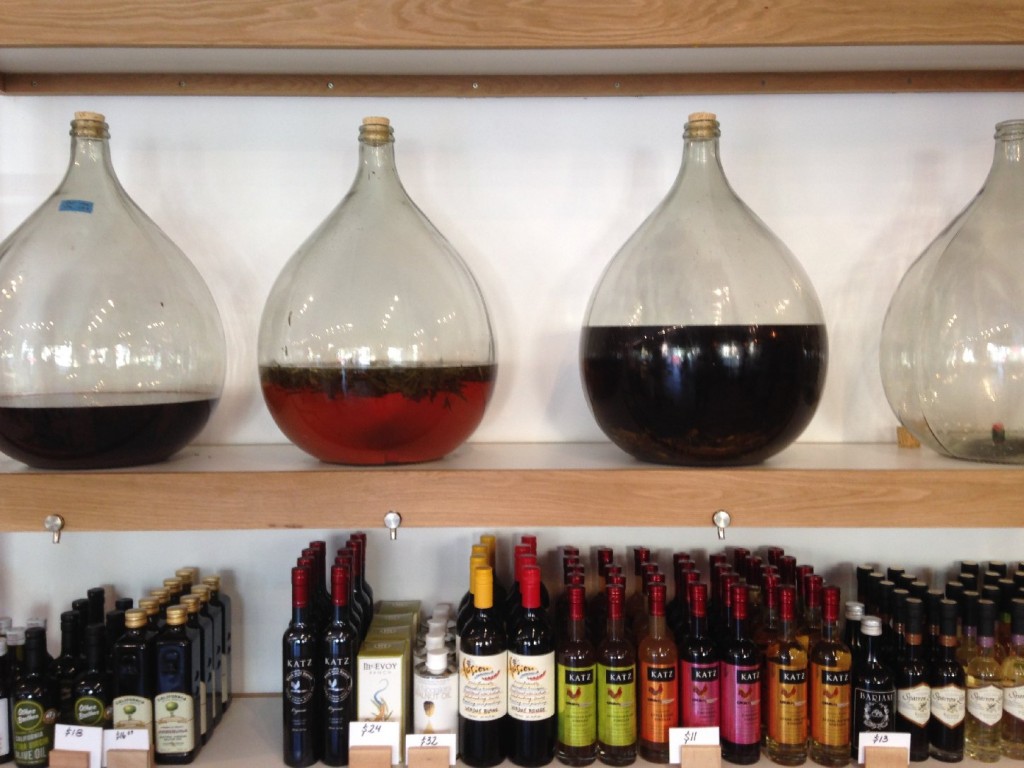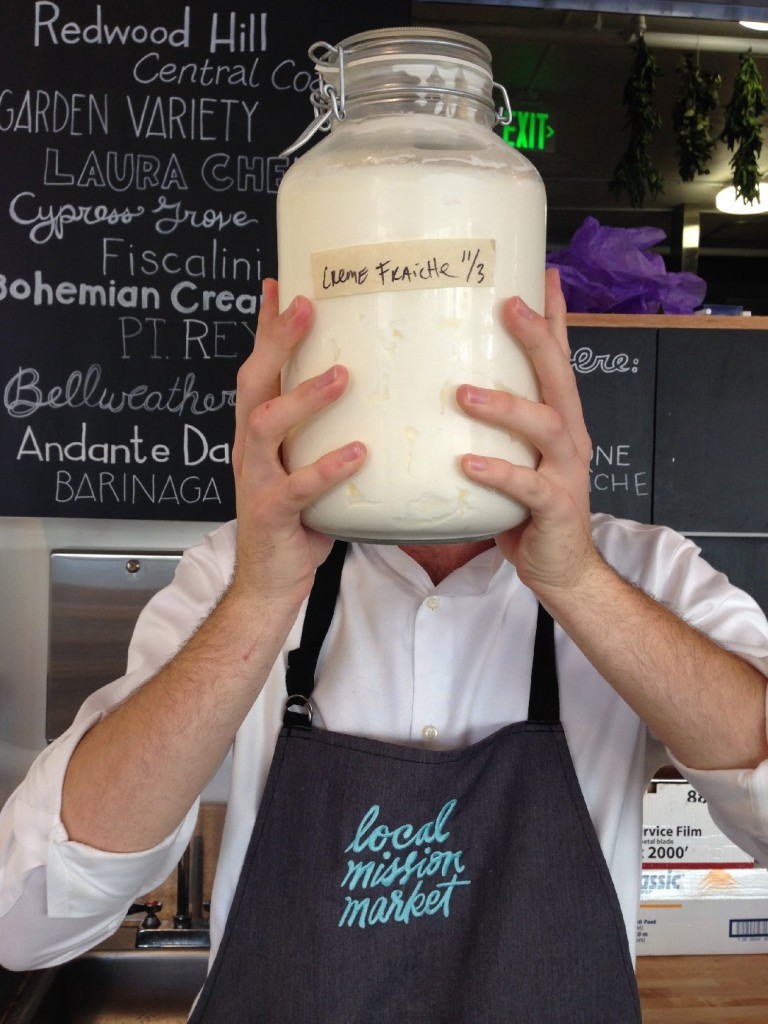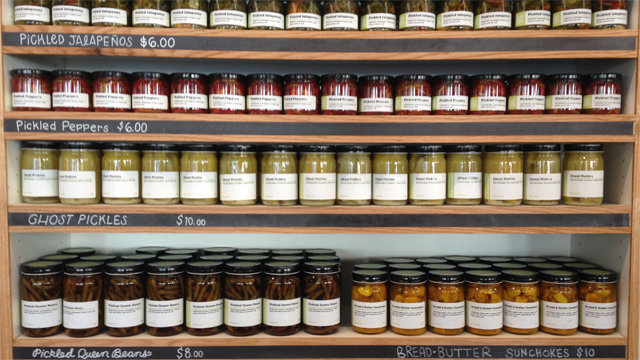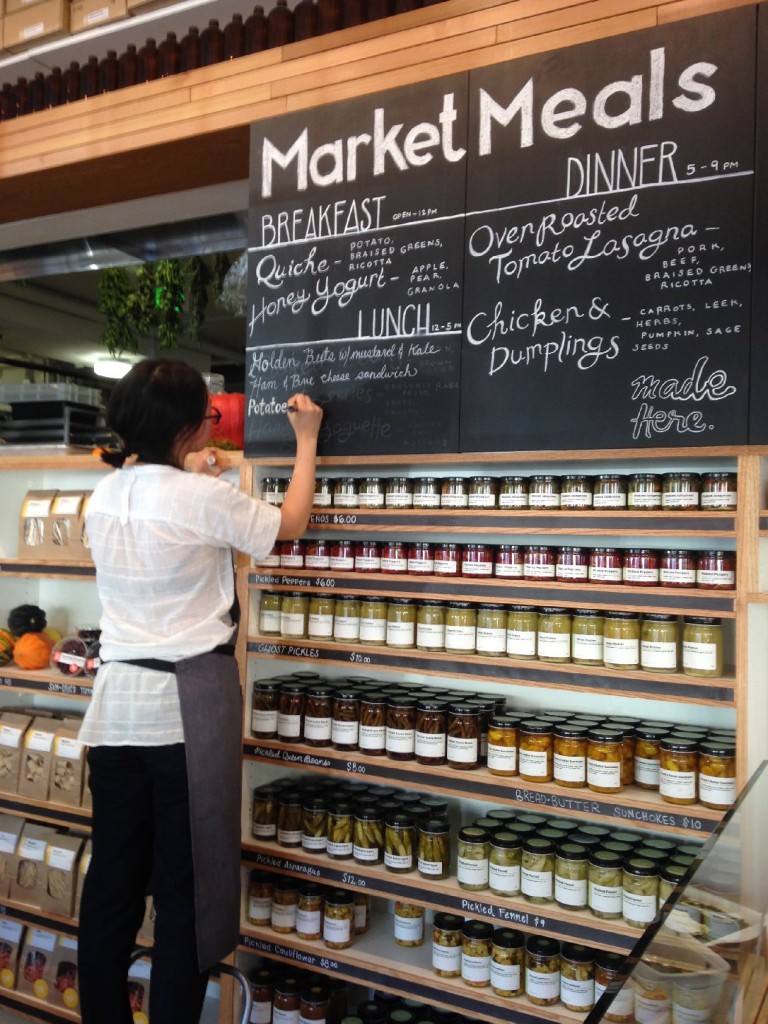 My original plan was this: a local Mission market seemed more than just an opportunity to find good food. Anything with the words local and Mission seemed like it would have to include cute, bearded boys, and writing an article seemed like the perfect opportunity to talk to them. Perhaps it was too early on that Saturday to catch throngs of the Mission’s finest assortment of eligible bachelors, so I was left face to face with the food. But what was pop-y about pickled fennel, eight kinds of flour, or single-source, pureed baby food?
My original plan was this: a local Mission market seemed more than just an opportunity to find good food. Anything with the words local and Mission seemed like it would have to include cute, bearded boys, and writing an article seemed like the perfect opportunity to talk to them. Perhaps it was too early on that Saturday to catch throngs of the Mission’s finest assortment of eligible bachelors, so I was left face to face with the food. But what was pop-y about pickled fennel, eight kinds of flour, or single-source, pureed baby food?
And then I saw the cheese guy. Beard. Check. Apron. Check. Hunks of cheese. Check. I snatched a sip of the ginger lemonade and strode up to the counter and explained that I was writing an article about cute people at the market, and that he was cute. I was blushing immensely and fumbling in my bag for a pen and notebook to make myself look legitimate. Chris, the cheese guy, was completely unphased and unimpressed by my compliment and proceeded to tell me about the hunks of aged milk curdle surrounding him. Like everything in the market, all of the cheese was from Northern California, nothing more than a day away; Yaron, the owner, and the executive chef, Jake des Voignes knew each and every producer and had been out to their farms.
 I tried to awkwardly flirt with Chris: where was he from, what was his deal with cheese? I learned that he was a newbie to San Francisco but a cheese expert, having worked at the Bedford Cheese shop in Brooklyn (which I had been to before). One of his favorite cheeses at the market was the Two Rock Valley aged goat cheese. He gave me a slice. It was sharper than any cheese I’d ever had. I asked him if I could take a picture and convinced him to hold a big jar of creme fraiche in front of his face. When he put the bottle down, his face was red and I figured it was time to leave the poor guy alone.
I tried to awkwardly flirt with Chris: where was he from, what was his deal with cheese? I learned that he was a newbie to San Francisco but a cheese expert, having worked at the Bedford Cheese shop in Brooklyn (which I had been to before). One of his favorite cheeses at the market was the Two Rock Valley aged goat cheese. He gave me a slice. It was sharper than any cheese I’d ever had. I asked him if I could take a picture and convinced him to hold a big jar of creme fraiche in front of his face. When he put the bottle down, his face was red and I figured it was time to leave the poor guy alone.
But I still didn’t have a story. Yes, everyone there was nice and accommodating. Yes, there was a huge, gorgeous industrial kitchen peeking through from the back where Jake and several other chefs from the Local restaurants handmade around 1,400 items for the store. Yes, Yaron was attentive and answered all of my questions, stating that curating, producing, and perfecting over one thousand items compared to 20 items for a restaurant was the most exhausting job ever, but that no one else did it like this, and not in this wasteland grocery store area at 23rd and Harrison, serving the whole southeast Mission.
I was skeptical though. How was Bi-Rite any different, really? Weren’t they utter locavores as well? And wasn’t the Local Mission Market really expensive? How was I to believe it wasn’t just expanding the super-gentrification that was happening on Valencia Street? All the same existential questions were coming up. Why was it cool but so annoying? Why was the owner so young and so handsome? Should I get cheese? What does it mean to eat food, to eat good food in San Francisco? And how was I supposed to write an article about it that didn’t seem completely frivolous and bougie?
 I got lost somewhere in the San Francisco foodie downward spiral. And then I collected myself. A couple days later I biked home from work and decided to take the route that would pass by the market. Maybe I would learn something new, maybe I would find a better story. It was dark since it’s winter and I had to lock my bike against a tree because the market is still waiting for the city to install bike parking. Walking into the lighted space, I didn’t see the cheese guy or the owner, I didn’t see a crowd. But it was the first time that I noticed a rolling wooden ladder that climbed above the ceiling length shelves, a touch that put me back to some cute European village where you knew everyone, where the market was a compact space, and you had to make the most of it.
I got lost somewhere in the San Francisco foodie downward spiral. And then I collected myself. A couple days later I biked home from work and decided to take the route that would pass by the market. Maybe I would learn something new, maybe I would find a better story. It was dark since it’s winter and I had to lock my bike against a tree because the market is still waiting for the city to install bike parking. Walking into the lighted space, I didn’t see the cheese guy or the owner, I didn’t see a crowd. But it was the first time that I noticed a rolling wooden ladder that climbed above the ceiling length shelves, a touch that put me back to some cute European village where you knew everyone, where the market was a compact space, and you had to make the most of it.
My goal was to find a meal there that was affordable. I discovered some daily made gigli (a fresh, undried pasta that looks like a lily), a house marinara sauce, bright green collards, and a breakfast sausage. Yes, it was weird, but I made something simple and delicious, I had leftovers, and it was under 20 bucks. Only when I was leaving, after I had asked the man who wrapped my sausage a bunch of leading, stupid questions about kombucha that they didn’t have, I realized he was Jake, the executive chef. He didn’t even tell me or make a big deal of it, he was just excited about almond milk, future kombucha projects, and my single, sad sausage which he had made that day.
 Post by contributor Alex Vikmanis
Post by contributor Alex Vikmanis But according to Yaron Milgrom, owner of the new Local Mission Market, most people somehow come to terms with their foodie existential dilemmas and end up eating in more than eating out. He would know, since he’s also the owner of Local Mission Eatery and Local’s Corner, two neighborhood restaurants. He knew that he wanted to reach more people than just what his restaurants could seat. The grocery will always be more important in a person’s life.
But according to Yaron Milgrom, owner of the new Local Mission Market, most people somehow come to terms with their foodie existential dilemmas and end up eating in more than eating out. He would know, since he’s also the owner of Local Mission Eatery and Local’s Corner, two neighborhood restaurants. He knew that he wanted to reach more people than just what his restaurants could seat. The grocery will always be more important in a person’s life.



